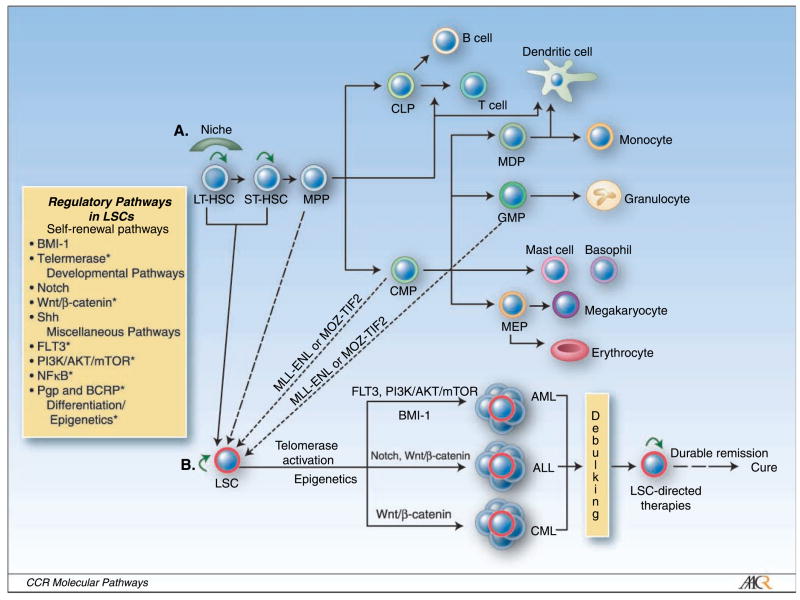Fig. 1.
A, the hierarchy of the hematopoietic system. LT-HSCs reside in a niche and asymmetrically divide into ST-HSCs and/or self-renew (green arrow). ST-HSCs exiting the niche actively undergo expansion and give rise to multipotent progenitors (MPP) that lack self-renewal potential. Common lymphoid progenitors (CLP) and common myeloid progenitors (CMP) arise from multipotent progenitors. Common lymphoid progenitors give rise to T cells and B cells. CMPs give rise to granulocyte/macrophage progenitors (GMP), megakaryocyte/erythroid progenitors (MEP), and mast cell and basophil progenitors, as well as macrophage and dendritic cell progenitors (MDP). B, leukemia stem cell hierarchy. LT-HSCs and ST-HSCs, as well as multipotent progenitors, CMPs, and GMPs, can potentially become LSCs with preserved self-renewal capacity. LSCs up-regulate telomerase activity and express stemness factors that are associated with self-renewal, developmental, and growth signaling pathways (see box). LSCs can differentiate into multiple types of leukemia via distinct gene activation. Conventional cytotoxic chemotherapy can only achieve tumor debulking by killing mature leukemia cells. LSCs are resistant to conventional treatment strategies and will often repopulate, resulting in recurrence of the disease. LSC-directed therapies (see Table 1), when given together with debulking agents, are hoped to yield durable remissions and ultimately cures. *, LSC targets that can be treated with drugs.

